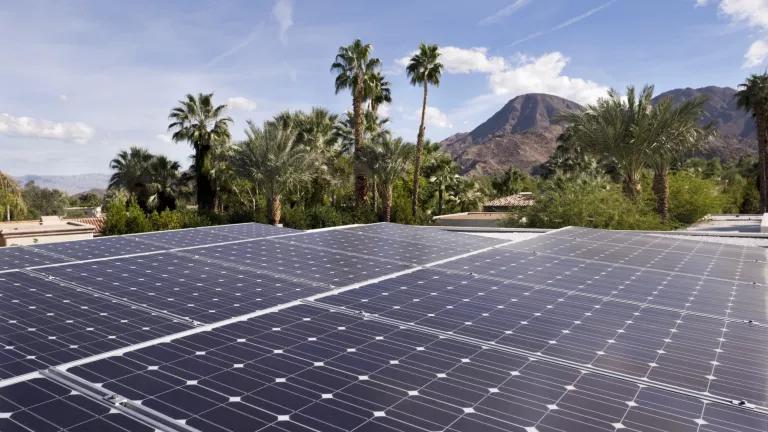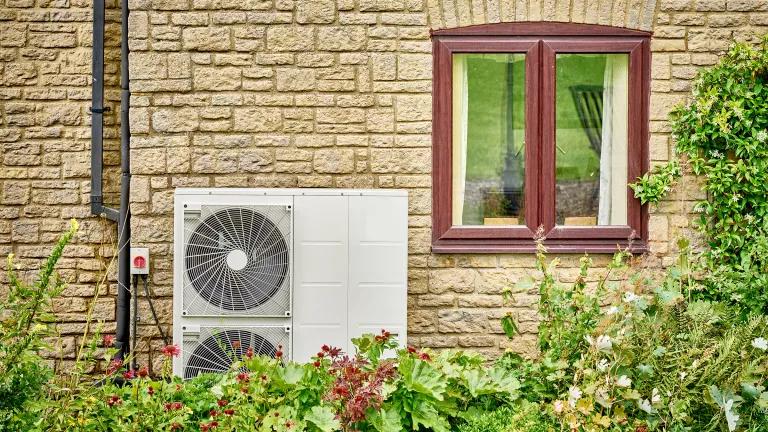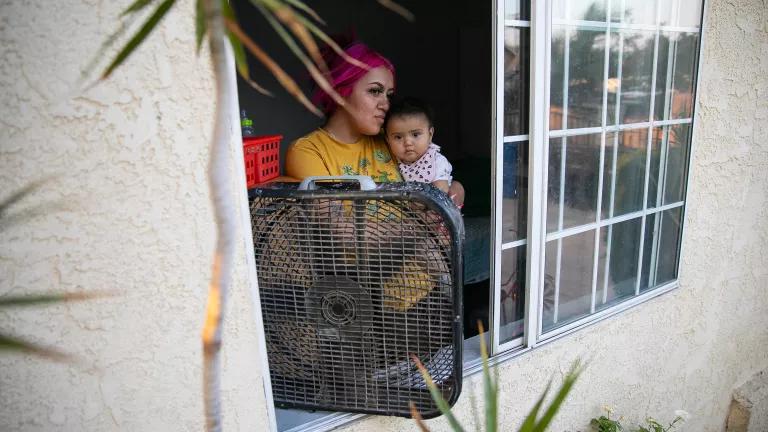CA 2020 Building Code Draft: Zero-Net-Electricity New Homes
California is seeking input on a plan to update its building energy standards to increase energy efficiency, clear the way for clean energy heating and hot water, and, for the first time, require new homes to install rooftop solar panels.

California is seeking input on a plan to update its building energy standards to increase energy efficiency, clear the way for clean energy heating and hot water, and, for the first time, require new homes to install rooftop solar panels. The standards, effective in January 2020, will be a big step forward for energy savings and reducing the carbon footprint of California’s homes and buildings—the second-largest source of greenhouse gas emissions in the state.
In official comments submitted this week, NRDC is weighing in on proposed changes to the state’s building code to ensure they successfully further the state’s climate goals. California is an energy efficiency and clean energy leader and is the first state to mandate zero net electricity through a building code, so it’s important to get it right.
California’s current building standards save energy and water, reduce pollution, and shore up electric reliability, all while providing consumers with utility bill savings that exceed the upfront cost of meeting the code’s requirements. The standards’ first job is to ensure that as little energy and water are needed as possible—for example, homes built after 2020 are expected to have very energy efficient attics and walls, improved windows and doors, and properly installed insulation—or other efficiency upgrades that provide equivalent savings. As occupants can attest, a more energy-efficient home is a more comfortable home.
Under this proposed code, new buildings will be efficient enough that their electricity use can be offset by a modest number of solar panels. Consequently, for the first time, building energy standards will take on another role: in 2020 they will require that rooftop solar panels be installed on new single-family homes and low-rise multi-family buildings to offset the home’s expected annual electricity use and achieve “zero-net electricity” status.
There will be exemptions for buildings that are deemed unsuitable for solar, such as when shaded by trees or other buildings. The standards will also provide an option for builders to tap into shared community solar projects, which can reduce the cost of solar power, as long as these community solar projects deliver the same customer and societal benefits as dedicated onsite systems.
The standards are expected to provide an incentive for solar energy storage systems, with a focus on in-home battery installations but also including thermal storage such as flexible electric water heating and air conditioning, that run when demand is low and there is abundant solar energy on the grid, and reduce energy use during peak demand, also will receive an expanded credit toward the home energy efficiency score.
Energy storage helps alleviate potential adverse grid impacts of more rooftop solar installations in California by helping homeowners shift load to maximize self-consumption of onsite generation. That will minimize the amount of solar energy exported to the electric grid at times when there is more supply than demand for electricity. While the storage incentive means homes can have somewhat fewer energy-saving features, they must still meet at least the energy efficiency requirements required by the code today, and this credit is only temporary, we expect it will be phased out after 3 years in the next code cycle.
Leveling the playing field between fossil gas and electricity
The new standards are also expected to take steps that remove historical preference for natural gas-based space and water heating, dating back from the 1990s and early 2000s when the electric grid had little renewable energy available and electric appliances were less efficient. California’s electric grid is rapidly getting cleaner—on track to achieve 50 percent of the state’s electricity being generated from renewable energy such as pollution-free wind and solar by 2020. And with today’s super-efficient heat pump technology, high-efficiency electric space and water heating now produce less than half the greenhouse gas emissions of even the most efficient gas furnaces and water heaters. Unlocking the potential for electric space and water heating is a key move that will help reduce carbon pollution generated from heating within homes and buildings, as natural gas is responsible for nearly half of the carbon emissions from California’s building sector.
California has a goal of reaching net zero energy use in new residential buildings by 2020, meaning new homes need to generate enough onsite energy to offset their energy use on an annual basis. The new building code standards will bring California closer to that goal, but do not achieve it fully—they will not require natural gas use to be offset by solar power generation. This approach makes sense for now—generating electricity beyond what’s used on site to offset California’s widespread use of natural gas would require larger and costlier solar installations and would not fully mitigate the emissions from the use of natural gas.
Still opportunities for zero-emission buildings
Importantly, the building energy standards’ focus on reducing the preference for natural gas leads to more opportunities to achieve zero-emissions of greenhouse gases (GHG), including carbon and methane. To effectively reduce the GHG footprint of California’s buildings, future code updates need to focus on using pollution-free energy to run space heating and water heating, rather than just getting to net zero energy while still burning fossil gas onsite and letting fugitive emissions accelerate climate change and impact people’s health. California Assemblymembers Bonta and Friedman, and Senator Stern have just introduced bills to address this issue.
We’ll be making a more detailed examination of the specific costs and benefits of this proposed building code update in the coming months. But it’s important to note that building energy efficiency standards provide big benefits to all Californians. The standards currently in place are expected to save Californians $1.6 billion over the next 30 years. For homeowners, homes with an energy-efficient certification sell faster—and at a premium—than homes without one. And for low-income residents, making housing more energy efficient will provide real relief from high energy bills and increase their disposable income. In California, low-income households spend twice as much on energy as a percentage of income that the statewide average.
Adopting the California Energy Commission’s zero-net-electricity proposal in its current form will save Californians money on energy bills, make homes more comfortable and reduce California’s carbon emissions. If future updates continue to shift toward zero-emissions buildings, then California can carry on leading the way to a clean energy future.



